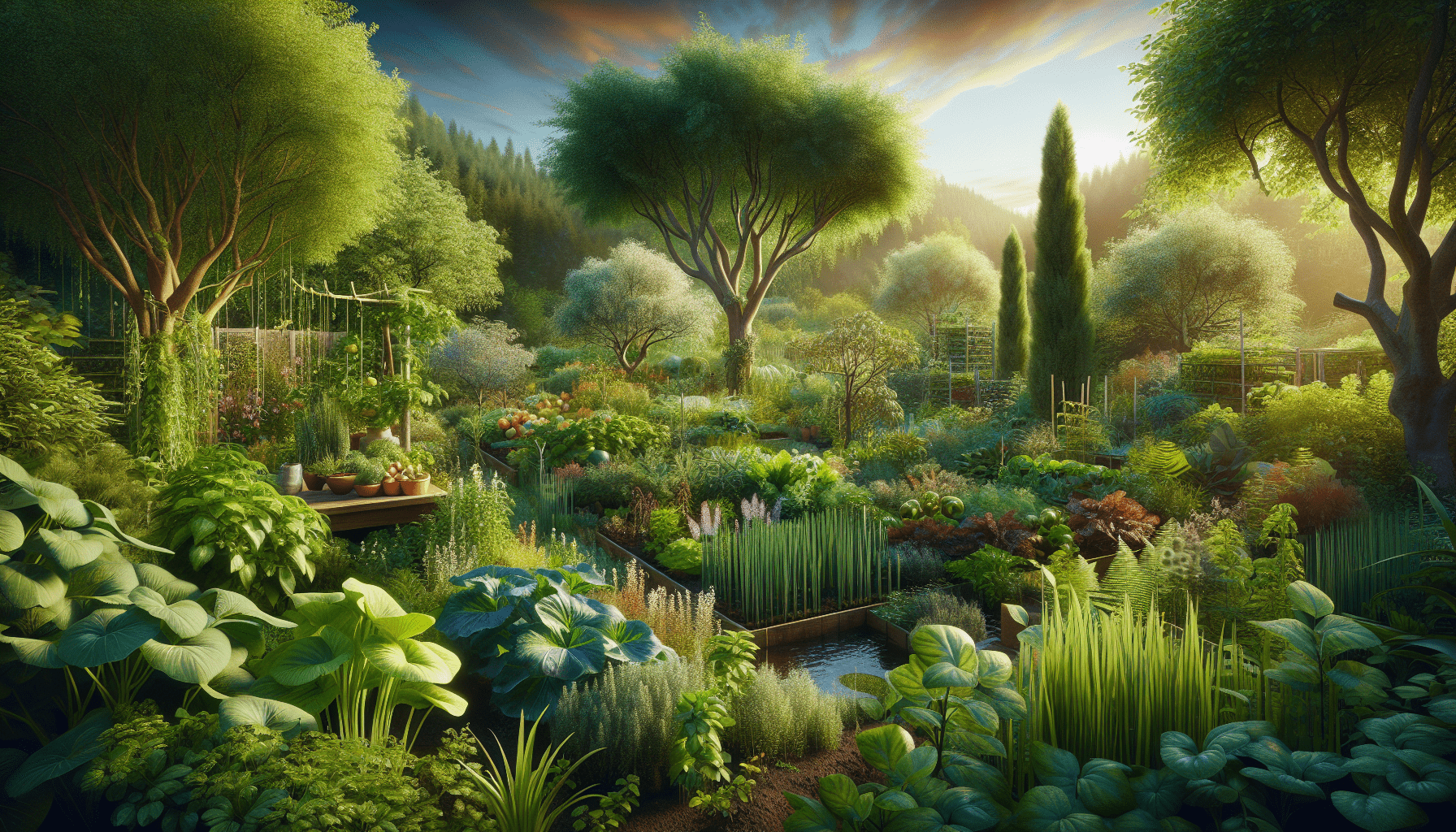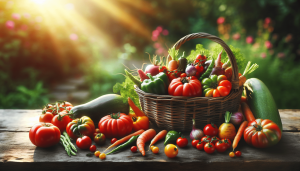What makes our gardens thrive while being kind to the planet?
What Is Permaculture?
Have we ever wondered if there’s a way to grow our food sustainably while caring for the environment? Permaculture might be the answer we are looking for. But what exactly is permaculture? Let’s dive into understanding this holistic approach to agriculture.
Understanding Permaculture
Permaculture is a design philosophy that mimics natural ecosystems. The term itself is a contraction of “permanent agriculture” or “permanent culture.” It integrates land, resources, people, and the environment through mutually beneficial synergies. Permaculture’s core is sustainability and ecological harmony, principles that help us live in a regenerative relationship with nature.
Brief History of Permaculture
Permaculture was developed in the 1970s by Bill Mollison and David Holmgren in Australia. They sought to create agricultural systems that worked with nature rather than against it. Their inspiration came from indigenous knowledge, traditional farming, and insights from modern science.
Principles of Permaculture
Understanding the principles of permaculture helps us grasp its true essence. These principles guide us in creating sustainable and self-sufficient systems.
Earth Care
This principle emphasizes respecting and nurturing the Earth. By understanding local ecology, we can design systems that restore and maintain natural cycles. Earth care involves practices such as improving soil health, conserving water, and protecting biodiversity.
People Care
People care is about looking after ourselves, our communities, and future generations. It emphasizes personal responsibility and cooperative relationships. Sustainable living and fair resource distribution are crucial aspects of people care.
Fair Share
Fair share, also known as “return of surplus,” is about sharing excess resources. This principle ensures resources are redistributed to foster balance and sustainability, preventing over-consumption and depletion.
Other Key Principles
Apart from these ethical principles, permaculture is built on foundational principles such as:
- Observe and Interact: Understanding our environment by observing natural systems before making changes.
- Catch and Store Energy: Harnessing renewable energy sources like sunlight and rainwater.
- Obtain a Yield: Ensuring our systems provide tangible benefits, like food or shelter.
- Apply Self-Regulation and Accept Feedback: Adapting and refining our systems based on their performance.
- Use and Value Renewable Resources: Prioritizing resources that can replenish without harming the ecosystem.

Components of a Permaculture System
A permaculture system integrates various components to create a sustainable and self-sufficient environment.
Zones and Sectors
Permaculture design divides land into zones and sectors. Zones are based on how frequently different areas are accessed, while sectors consider environmental factors like wind, sun, and water flow.
Zone Description
| Zone | Description |
|---|---|
| 0 | The home itself. The central point of any permaculture design. |
| 1 | The areas closest to the house for daily use. |
| 2 | Areas visited just a few times per week. |
| 3 | Farm and crop areas visited less frequently. |
| 4 | Semi-wild areas for foraging and limited forest management. |
| 5 | Natural ecosystems left undisturbed for wildlife. |
Sectors
Sectors are environmental elements that pass through the site, like winds, water flow, and sunlight. Understanding both zones and sectors allows us to place elements where they will have the most benefit with the least effort.
Soil Management
Soil health is the foundation of any permaculture system. We need to focus on building and maintaining fertile soil rich in organic matter. Techniques include:
- Composting: Recycling organic waste into nutrient-rich compost.
- Mulching: Covering soil with organic material to retain moisture and improve fertility.
- Green Manure: Growing plants specifically to be tilled back into the soil to enhance its nutrient content.
Water Management
Effective water management ensures that we make the most of available water and reduce erosion. Techniques include:
- Rainwater Harvesting: Capturing and using rainwater.
- Swales: Shallow trenches that follow the land’s contour to capture rainwater and allow it to seep into the ground.
- Ponds and Dams: Creating water storage systems to support irrigation and livestock.
Plants and Animals
Integrating plants and animals in a permaculture system promotes biodiversity and resilience. We should:
- Plant Diversity: Cultivate a variety of plants to improve resilience and productivity.
- Animal Integration: Use animals for tasks like controlling pests, fertilizing soils, and managing weeds.
- Agroforestry: Combining agriculture and forestry to create diversified and sustainable land-use systems.
Practical Permaculture Applications
Permaculture transcends gardening and farming; it can be integrated into various aspects of our daily lives.
Home Gardens
We can apply permaculture principles in our home gardens by designing with zones and sectors, implementing companion planting, and using vertical space efficiently. A well-designed garden can provide fresh produce while enhancing biodiversity.
Community Projects
Permaculture can strengthen our communities through shared gardens, local food initiatives, and educational workshops. By connecting with our neighbours and working collaboratively, we create resilient local systems that benefit everyone.
Urban Permaculture
City dwellers can also engage with permaculture by utilizing small spaces like balconies, rooftops, and community gardens. Urban permaculture emphasizes resource efficiency, such as composting organic waste and capturing rainwater.
Professional Permaculture
For those passionate about permaculture, there are various career opportunities. One can become a permaculture designer, consultant, educator, or even a writer sharing insights and experiences.

The Ethics and Philosophy Behind Permaculture
Beyond the practical applications, permaculture embodies a philosophy of living harmoniously with the Earth.
Ethical Framework
Permaculture’s ethical framework pushes us to consider the long-term impacts of our actions. By focusing on Earth care, people care, and fair share, we are encouraged to make decisions that contribute to a sustainable and equitable world.
Cultural Shifts
Practicing permaculture often requires a cultural shift. We move from consumerism to sustainability, from competition to cooperation, and from short-term thinking to long-term planning. These cultural shifts are integral to creating resilient and thriving communities.
The Benefits of Permaculture
Permaculture offers numerous benefits, both for us and the planet.
Environmental Benefits
By mimicking natural ecosystems, permaculture designs lead to reduced soil erosion, increased biodiversity, and enhanced soil fertility. We also minimize our ecological footprint by using renewable resources and recycling waste.
Economic Benefits
Permaculture can be economically beneficial by reducing dependency on external inputs like chemical fertilizers and pesticides. This self-sufficiency can lead to cost savings and new economic opportunities within local communities.
Social Benefits
Through permaculture, we foster stronger community bonds, enhance food security, and create educational opportunities. Permaculture communities often focus on shared goals and mutual support, strengthening social ties.

Challenges and Considerations
While permaculture offers many advantages, it also comes with its set of challenges.
Learning Curve
Permaculture requires a significant amount of learning and adaptation. It’s crucial to understand local ecosystems, learn new skills, and sometimes alter deeply ingrained habits.
Time Investment
Designing and establishing a permaculture system is not a quick process. It requires time and effort to observe, plan, implement, and refine our systems.
Initial Costs
There may be initial costs associated with setting up a permaculture system, such as purchasing materials for rainwater harvesting or building raised beds. However, these investments often pay off in the long run.
How To Get Started with Permaculture
If we are intrigued by the promise of permaculture and wish to get started, here are some steps to guide us.
Start Small
It’s advisable to start with small, manageable projects. We can begin by transforming a small garden bed using permaculture principles or setting up a compost bin.
Educate Ourselves
There are many resources available online, including books, courses, and videos, that can teach us about permaculture. Key books include “Permaculture: A Designer’s Manual” by Bill Mollison and “Gaia’s Garden” by Toby Hemenway.
Observe and Plan
Observing our surroundings is vital. We should take time to understand the natural patterns and elements in our environment. Planning involves mapping out zones, understanding sectors, and deciding on the right elements to include in our design.
Connect with Others
Joining a local permaculture group or community can provide support, inspiration, and knowledge sharing. Collaborating with others often leads to innovative solutions and collective growth.
Implement and Experiment
Once we have a plan, we can start implementing our designs. Permaculture is an iterative process; we’ll learn by doing and refine our systems based on feedback and observations.

Case Studies of Successful Permaculture Projects
Studying successful permaculture projects can provide inspiration and practical insights.
The Permaculture Research Institute, Australia
Founded by Geoff Lawton, this institute has propagated permaculture principles globally. They have numerous demonstration sites showcasing effective permaculture designs for different climates and conditions.
Zaytuna Farm, Australia
Another notable project by Geoff Lawton, Zaytuna Farm is a model permaculture farm featuring systems like food forests, swales, and animal integration. It offers courses and workshops, fostering permaculture education.
The Central Rocky Mountain Permaculture Institute, USA
Located in Colorado, this institute, founded by Jerome Osentowski, demonstrates high-altitude permaculture strategies. Their work includes greenhouses, food forests, and sustainable building techniques.
Songhai Center, Benin
The Songhai Center integrates permaculture with local agricultural practices to enhance food security and sustainability. It serves as a training center, spreading knowledge and practices across Africa.
The Future of Permaculture
Permaculture is more than just a set of agricultural techniques; it is a vision for a sustainable, harmonious future.
Increasing Adoption
As awareness of environmental issues grows, more individuals and communities are adopting permaculture principles. We see a rise in permaculture gardens, eco-villages, and sustainable agriculture projects worldwide.
Technological Integration
Innovations in technology offer exciting possibilities for permaculture. From advanced irrigation systems to AI-driven agricultural planning, technology can enhance the efficiency and scalability of permaculture practices.
Policy and Advocacy
Advocacy for policies that support sustainable agriculture and environmental stewardship is crucial. By influencing policy, we can create frameworks that encourage the wider adoption of permaculture.
Global Collaboration
Global collaboration allows us to share knowledge, resources, and strategies, making permaculture a truly worldwide movement. International networks and conferences provide platforms for learning and cooperation.

Conclusion
Permaculture is a powerful approach to creating sustainable, resilient ecosystems by working harmoniously with nature. Whether we have a large farm or a small urban garden, we can apply permaculture principles to enrich our lives and the environment. Although there are challenges, the benefits for ourselves, our communities, and our planet are immense. By embarking on the permaculture journey, we not only cultivate healthy food but also foster a deeper connection to the natural world and a vision of a more sustainable future for all. So, are we ready to design with nature and embrace the principles of permaculture?



